Tremors big and small shake up Ford rivals
By John Gilbert
Everybody who drives any kind of vehicle is aware how incredible pickup truck popularity has become, Ford, the king of the pickup game, has now just about reached the most far-out extremes in building and planning off-road capable pickups. But it keeps adding more.
After I had driven just about every size and strength variety of pickups that Ford builds, including F-150, F-250, F-350, Ranger, and specialty models like the Raptor, I figured I had tried them all, and been impressed by nearly all. Then I got a new test drive, and it was the Ford F-250 Super Duty “Tremor” pickup. Or, more accurately, the “2021 F-250 SRW 4×4 Crew Cab Platinum 160-inch wheelbase Styleside Tremor” pickup.
That comes with Ford’s 7.3-liter fuel-injected V8 monster gasoline engine with a 10-speed automatic, and the Tremor monicker is emblazoned on the rear flanks just to designate the off-road trim and capability built within — a package that includes off-roading specialty items such as heavy-duty skid plates, a 10,000-pound gross vehicle weight package, chrome tow hooks, a 4.30 rear axle ratio, and the whole thing is raised enough so be perfect for an Olympic year, because you might need high-jumping skills to get in easily, even with the fixed running-board.
It is, basically, a heavy-duty variant on the theme of Ford’s vastly upgraded Raptor off-road F-150, but this one is only on the F-250 medium-sized Super Duty, with all its bolstered underpinnings. If it’s hard to imagine an F-250 version of a Raptor, it is less difficult after spending a few days with the Tremor.
The long and short of it is that Ford complements the F-250 monster with a Tremor version of its compact Ranger pickup, as well, and I got them back-to-back, just for comparison purposes.
If an actual tremor describes the earth trembling when an earthquake shakes the ground, the full force of a 7.3-liter V8 pulling a trailer or hauling a full load, or climbing rocks the size of mountains, certainly offers enough of a resemblance to justify the name.
On top of its powerful capabilities and upscale interior, the F-250 Tremor came in a stunning dark blue color, called “Antimatter Blue,” with black leather seats. And yes, it costs a bit — the test vehicle rose from $65,000 to $73,825 after all the options are tallied.
When the car distribution fellows came to pick up that F-250 Tremor, they replaced it in my driveway with another Ford pickup — a 2021 Ranger midsize pickup, one which also had the word “Tremor” emblazoned on its rear sides. Yes, Ford has expanded its specialty off-road truck fleet to include an oversized one, and also a compact one. The Ranger also was a SuperCrew model, and had a 5-foot box , and it was painted Velocity Blue — a lighter color than its big, F-250 brother. Tremors, of course, come in various degrees, so having them of different sizes makes sense.
Everything came equipped on the test Ranger, which stickered for $34,745 with the 2.3-liter EcoBoost (turbocharged) 4-cylinder engine and 10-speed automatic, and it climbed $10,000, to $44,430, when you added the XLT series trim, the Tremor off-road package, remote start, the technology package, and the Tremor goodies and graphics.
If you need the heavy-duty capabilities, the F-250 is your answer, but if you want to go dashing off-road a bit, but mainly want to maneuver through traffic and park with ease in tight areas while also announcing to the world that you could veer off-road at any moment, the Ranger version is the perfect bookend at the compact end.
Interestingly, while I got 12.5 miles per gallon with the F-250 Tremor, I only managed to get up to 18.5 mpg with the lightweight Ranger model. I would like more from the F-250, but understand how thirsty the 7.3 V8 is, but I also expected more from the turbo 4 in the Ranger.
The reason those two trucks being introduced are almost ironic, of course, is that the big news from Ford in the May was that it will be coming out with an all-electric version of the F-150, which will have spectacular, and silent, power, and will give you all the towing and hauling capability you can imagine, and will also be strictly a plug-in, rechargeable vehicle, a full EV. It will even have a generator stashed and connected to the high-output battery pack that can take care of supplying all the demands your house might have in the event a power failure knocks out your electricity.
It seems that the hard-core pickup buyers might be the last and most reluctant to give up their gasoline engines, no matter how poor their fuel economy might be. But if Ford can pull off the switch to an electric F-150, we will be fascinated to watch the transition. And it will be anticlimactic to sit here and quibble about the fuel economy of a gigantic V8 or a turbo EcoBoost 4-cylinder if Ford is using them as an effective smoke screen while it sneaks out its silent EV version virtually behind our backs.
Me? I’m waiting to try out what is sure to be coming soon — an all-electric F-150 Raptor. With or without Tremor trim.


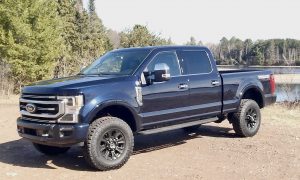
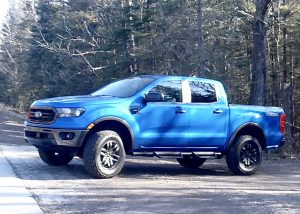
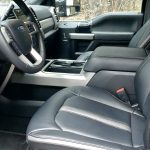
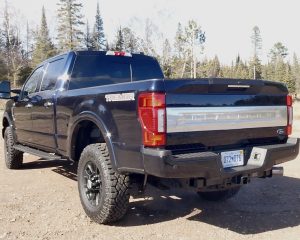

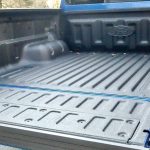
 John Gilbert is a lifetime Minnesotan and career journalist, specializing in cars and sports during and since spending 30 years at the Minneapolis Tribune, now the Star Tribune. More recently, he has continued translating the high-tech world of autos and sharing his passionate insights as a freelance writer/photographer/broadcaster. A member of the prestigious North American Car and Truck of the Year jury since 1993. John can be heard Monday-Friday from 9-11am on 610 KDAL(www.kdal610.com) on the "John Gilbert Show," and writes a column in the Duluth Reader.
John Gilbert is a lifetime Minnesotan and career journalist, specializing in cars and sports during and since spending 30 years at the Minneapolis Tribune, now the Star Tribune. More recently, he has continued translating the high-tech world of autos and sharing his passionate insights as a freelance writer/photographer/broadcaster. A member of the prestigious North American Car and Truck of the Year jury since 1993. John can be heard Monday-Friday from 9-11am on 610 KDAL(www.kdal610.com) on the "John Gilbert Show," and writes a column in the Duluth Reader.